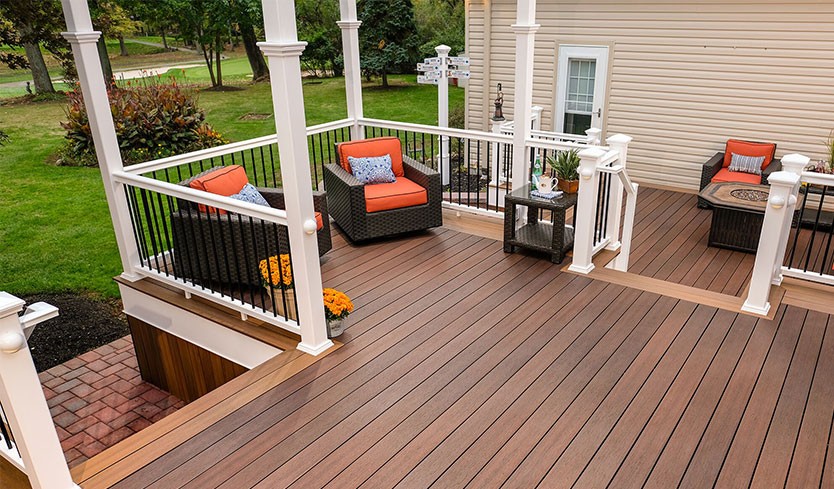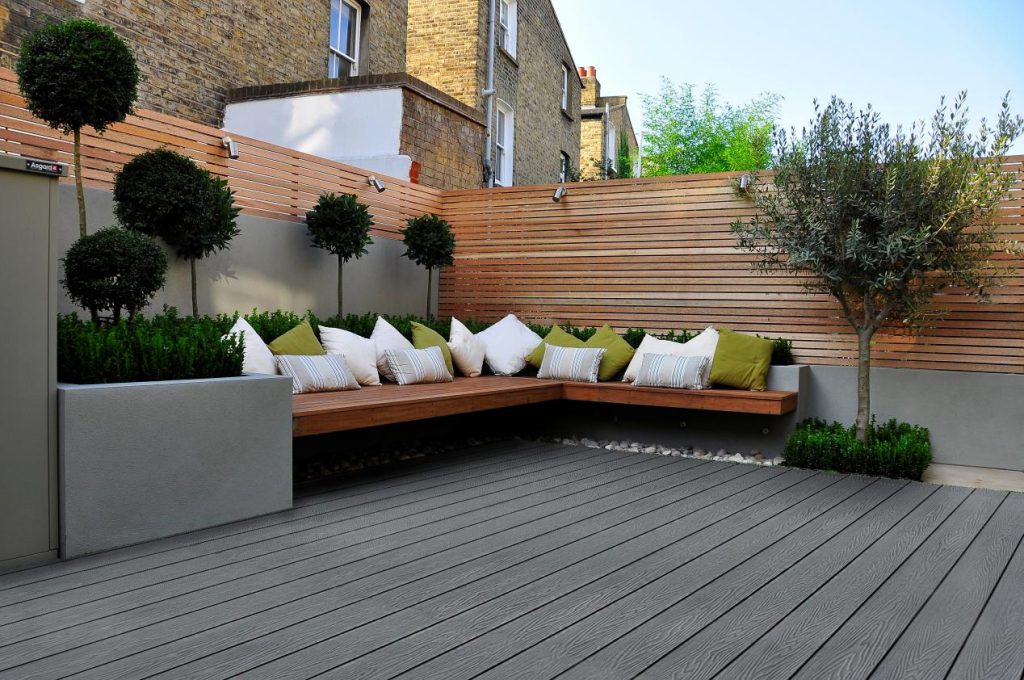Fencing is no longer just a boundary marker for your property—it has evolved into an essential design element that combines aesthetics, durability, and functionality. Among the latest innovations in the fencing industry, modern composite fencing stands out as a top choice for homeowners, landscapers, and commercial property managers. It combines the natural look of wood with the low-maintenance benefits of synthetic materials, making it a versatile and sustainable solution. In this comprehensive guide, we will explore the most important types of modern composite fencing, their key features, practical applications, and provide a detailed guide on how to select the best option for your property.
Table of Contents
What is Modern Composite Fencing?
Modern composite fencing refers to fencing made from a combination of natural fibers (usually wood) and synthetic materials such as recycled plastics. These materials are processed together to create strong, weather-resistant panels or planks that mimic the appearance of real wood without the drawbacks of traditional timber fencing.
Unlike traditional wood fences, composite fences do not rot, warp, or require frequent staining and painting. They are designed to withstand harsh weather conditions, resist pests, and last for decades with minimal maintenance. This makes them ideal for both residential and commercial applications where aesthetics, longevity, and sustainability are priorities.
Advantages of Modern Composite Fencing
Durability: Composite materials are highly resistant to rot, mold, and insect damage.
Low Maintenance: No need for regular staining or painting. Simple cleaning with water and mild soap is enough.
Eco-Friendly: Many composite fences use recycled wood and plastics, reducing environmental impact.
Aesthetic Variety: Available in multiple colors, textures, and finishes, providing the look of natural wood or modern designs.
Weather Resistance: Composite fences can withstand extreme temperatures, heavy rain, and UV exposure without warping or fading.

Key Types of Modern Composite Fencing
When choosing modern composite fencing, it’s essential to understand the main types available. Each type has unique characteristics that make it suitable for specific applications.
1. Modern Composite Wood Fence
This type mimics the traditional wood fence while eliminating common wood-related problems. The wood fibers in the composite blend provide a realistic texture and appearance, while the synthetic component ensures durability.
Features:
Natural wood-like finish
Resistant to warping, cracking, and splintering
Low maintenance and long-lasting
Available in various colors and grain patterns
Applications:
Residential backyard fencing
Garden borders
Pool enclosures
2. Modern Composite Fence Panels
Composite fence panels come pre-assembled in standardized sizes, making installation faster and easier. These panels typically include vertical or horizontal planks attached to a sturdy frame.
Features:
Quick and easy installation
Uniform design for modern aesthetics
Strong structural integrity
Can include decorative patterns such as lattice or slats
Applications:
Privacy fencing for homes
Boundary fencing for commercial properties
Decorative garden enclosures
3. Modern Composite Slat Fencing
Slat-style composite fences feature narrow, evenly spaced horizontal or vertical boards. This design provides a modern, open feel while maintaining privacy.
Features:
Sleek, minimalist appearance
Good airflow and light penetration
Can be used for both high-privacy and decorative purposes
Customizable spacing and height
Applications:
Contemporary residential designs
Rooftop or terrace fencing
Outdoor patio enclosures
4. Modern Composite Privacy Fencing
For properties that require maximum privacy, composite panels can be fully solid, leaving no gaps between slats. These fences provide a secure and private environment.
Features:
Complete privacy and security
Noise reduction benefits
Strong wind resistance
Long-lasting and weatherproof
Applications:
Backyard privacy fencing
Pool areas
Commercial spaces requiring secure boundaries
5. Decorative Modern Composite Fencing
Beyond functional fencing, some composite designs focus on aesthetics, incorporating patterns, textures, and colors to enhance landscaping.
Features:
Decorative textures such as wood grain or stone look
Various color options and finishes
Can integrate with lighting or landscaping features
Applications:
Gardens and patios
Commercial landscaping
Community parks and recreational areas
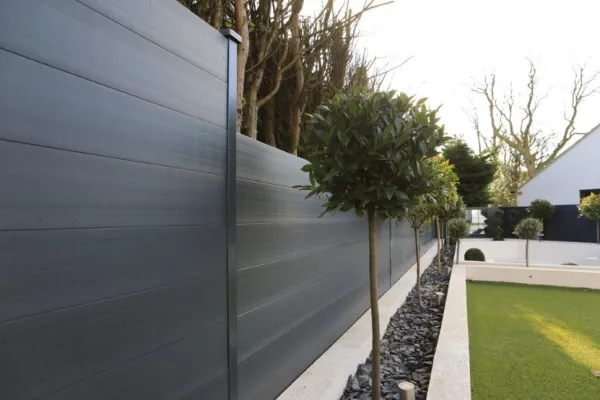
Key Features of Modern Composite Fencing
Modern composite fencing is highly valued for its unique combination of properties that traditional materials cannot match. Some of the standout features include:
Durability: Resistant to decay, insects, and weather damage. Composite fences can last 20–30 years with minimal upkeep.
Low Maintenance: Unlike timber, composite fences do not need regular staining, sealing, or painting.
Eco-Friendly Materials: Made from recycled wood fibers and plastics, reducing the demand for virgin timber.
Variety of Designs: Available in horizontal, vertical, and slat patterns, as well as multiple colors and textures.
UV and Fade Resistance: Many composite fences include UV stabilizers to prevent discoloration.
Easy Installation: Pre-assembled panels and modular systems simplify the installation process.
Safety and Security: Some composite fences are reinforced with steel or aluminum frames for added strength.
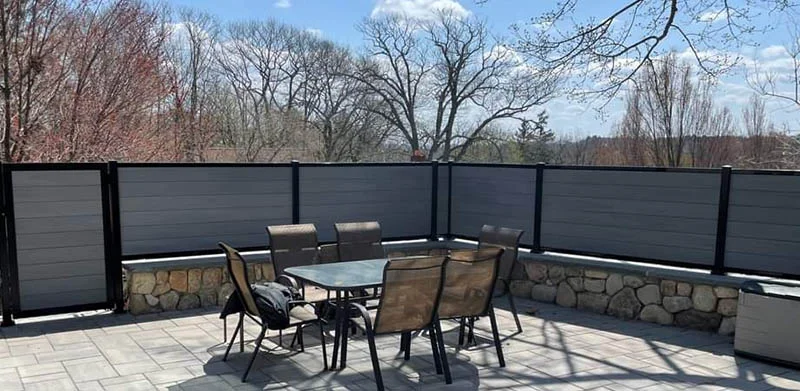
Applications of Modern Composite Fencing
Modern composite fencing is highly versatile and suitable for a wide range of applications. Understanding these applications can help property owners select the right type for their needs.
1. Residential Fencing
Homeowners choose composite fences for backyards, front yards, and pool areas due to their low maintenance and attractive appearance. Privacy panels and slat fences are especially popular for creating secluded outdoor spaces.
2. Commercial and Industrial Properties
Composite fencing is ideal for commercial properties where aesthetics and durability are equally important. Office buildings, warehouses, and retail parks often use composite fences to provide security while maintaining a professional look.
3. Garden and Landscape Projects
Modern composite fences can complement garden landscapes. Decorative panels, lattice designs, and textured finishes are popular for enhancing outdoor aesthetics.
4. Public Spaces
Parks, playgrounds, and recreational areas benefit from composite fencing due to its weather resistance and minimal maintenance requirements.
5. Rooftop Terraces and Pool Enclosures
Composite fences are suitable for elevated terraces or pool areas, providing safety, privacy, and a modern visual appeal.
How to Choose the Right Modern Composite Fencing
Choosing the perfect modern composite fencing requires careful consideration of several factors. Here’s a step-by-step guide to make the right decision:
1. Determine Your Purpose
Privacy or open design?
Decorative or functional?
Residential or commercial use?
2. Consider the Material Composition
Higher wood content provides a more natural look.
More plastic content ensures increased weather resistance and longevity.
3. Evaluate Panel Design
Horizontal panels create a modern look.
Vertical panels provide a traditional aesthetic.
Slatted panels allow airflow and partial visibility.
4. Check Color and Finish Options
Choose colors that complement your property and landscaping.
Wood-grain finishes offer a classic look, while smooth finishes create a contemporary style.
5. Assess Durability and Maintenance
Look for UV protection and reinforced materials for high-wind areas.
Consider whether cleaning requires only water and mild soap.
6. Budget Considerations
Composite fences generally cost more upfront than timber, but their long-term low-maintenance benefits make them cost-effective.
Compare prices between different manufacturers and consider installation costs.
7. Confirm Local Regulations
Check for height restrictions, property line rules, and neighborhood guidelines before installation.
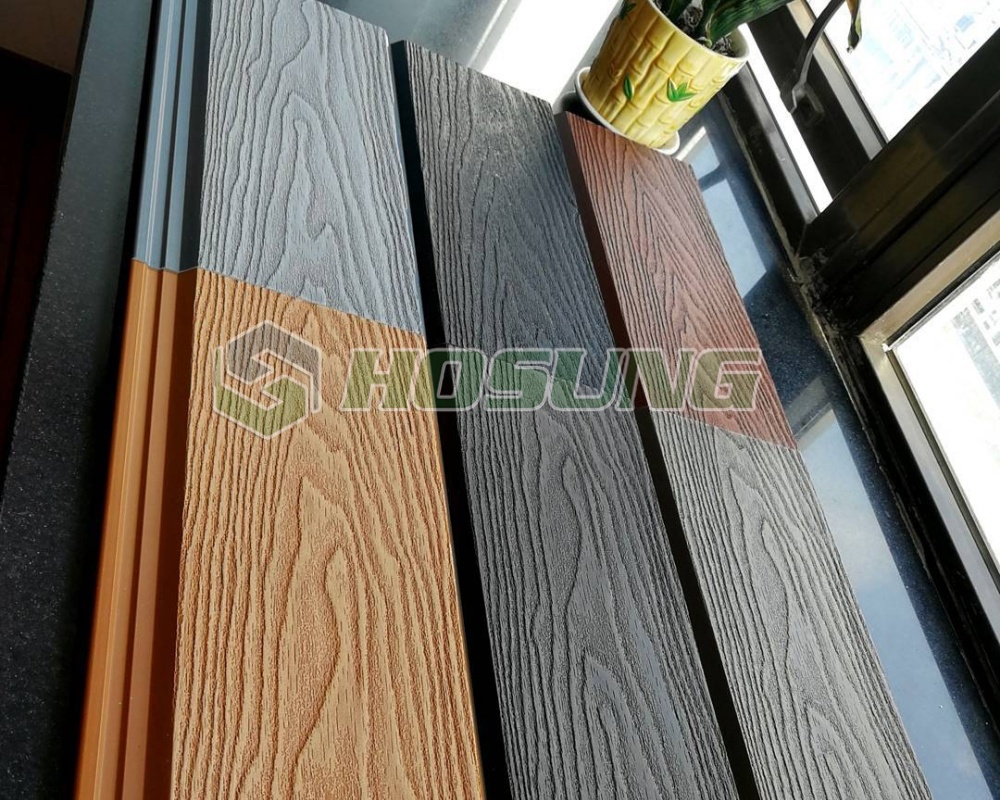
Installation Tips for Modern Composite Fencing
Proper installation ensures longevity and structural integrity. Here are some tips:
Level the Ground: Ensure a level base for panel installation.
Use Strong Posts: Reinforce with concrete or metal posts for added stability.
Follow Manufacturer Instructions: Pre-assembled panels require precise alignment.
Allow for Expansion: Composite materials expand slightly in heat, so leave gaps if recommended.
Secure Panels Properly: Use screws or clips provided by the manufacturer to prevent shifting.
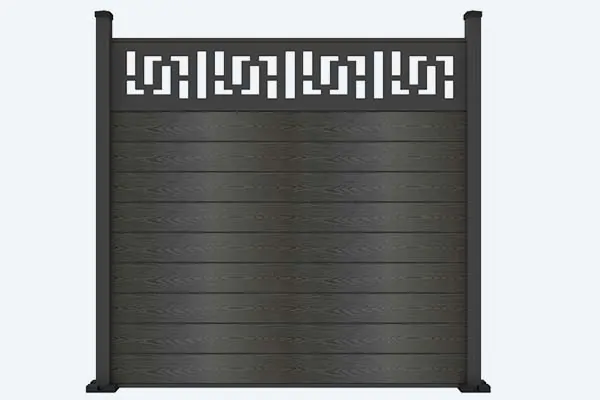
Maintenance Tips for Long-Lasting Fencing
Even though composite fencing is low maintenance, some simple care will extend its lifespan:
Clean Regularly: Remove dirt and debris using water, mild detergent, or a soft brush.
Avoid Harsh Chemicals: Bleach or strong solvents may damage the surface.
Inspect for Damage: Occasionally check for loose panels or scratches and address them promptly.
Trim Surrounding Vegetation: Prevent vines or shrubs from putting pressure on the fence.
Common Questions People Ask About Modern Composite Fencing
1. What is modern composite fencing?
Modern composite fencing is made from a combination of wood fibers and recycled plastics. It mimics the look of natural wood while providing enhanced durability and low maintenance.
2. How long does a composite fence last?
Typically, 20–30 years with proper installation and minimal maintenance.
3. How much does modern composite fencing cost?
Prices vary depending on material, panel design, and manufacturer. While more expensive upfront than wood, the long-term savings on maintenance make it cost-effective.
4. Is composite fencing better than wood fencing?
Yes. Composite fencing resists rot, insects, and weather damage, and requires little upkeep compared to traditional wood.
5. Can I install it myself?
Yes, pre-assembled panels make DIY installation possible, though professional installation ensures better alignment and durability.
6. Does it require maintenance?
Only occasional cleaning with water and mild soap is needed. No staining or painting is required.
7. Can it withstand harsh weather?
Yes. Composite fencing is designed to resist UV rays, heavy rain, and temperature extremes.
8. Is it eco-friendly?
Yes. Many fences use recycled wood and plastics, reducing the environmental impact.
Conclusion
Modern composite fencing is revolutionizing the fencing industry with its combination of beauty, durability, and low maintenance. From modern composite wood fences to decorative panels, these fences provide versatile solutions for residential, commercial, and public spaces.
When selecting a composite fence, consider the purpose, design, material composition, color, durability, budget, and local regulations. With proper installation and basic maintenance, a composite fence can remain an attractive, functional, and eco-friendly part of your property for decades.
For those looking to combine aesthetic appeal with practicality, modern composite fencing offers a smart, sustainable, and stylish solution that truly stands the test of time. If you want to get wholesale composite fencing panles, welcome to contact Hosung!


